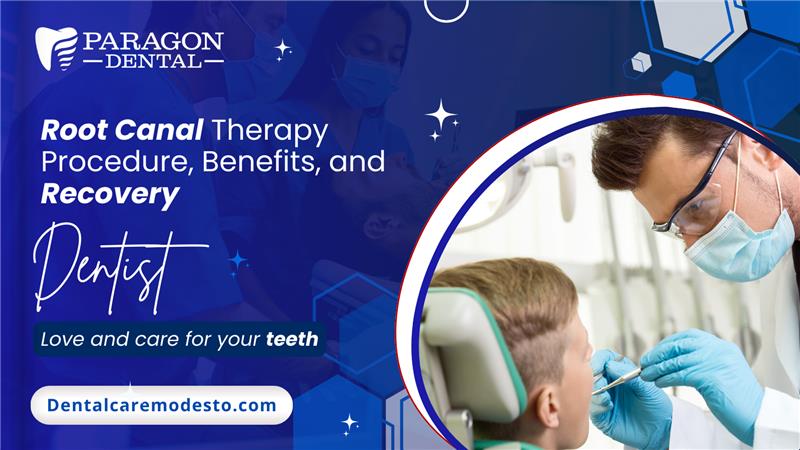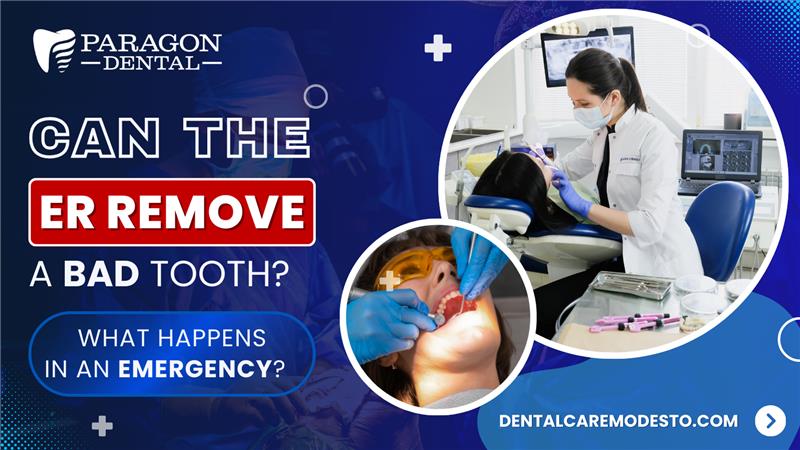If you have ever needed to save a tooth that has been damaged or infected significantly, you may have encountered the terms “root canal” and “root canal therapy” used interchangeably. While both are dental procedures designed to preserve a natural tooth, they are not precisely the same. Knowing the differences will enable you to make informed decisions regarding your dental health.
What Is a Root Canal?
The root canal refers to the inside of the tooth where the pulp, which is comprised of connective tissue, nerves, and blood vessels, is located. The pulp extends from the crown of the tooth to the roots, where it connects with the surrounding tissues.
When the pulp gets infected or inflamed through deep decay, cracks, multiple dental procedures, or trauma, it leads to excruciating pain and sensitivity. Unless treated, the infection can spread outward, causing abscess formation, bone resorption, and even tooth loss.
What Is Root Canal Therapy?
Root Canal Therapy Modesto (RCT) is the procedure that is done to treat a tooth having an infected or damaged pulp. The treatment process includes removing the infected pulp, disinfecting and cleaning the inner cavities, and closing the area using a biocompatible substance so that no new infection can arise.
The root canal therapy, Modesto restores the functionality and life of the tooth without requiring its extraction.
Step-by-Step Analysis of Root Canal Therapy, Modesto
Diagnostics and X-Rays – The dentist inspects the infected tooth, takes X-Rays of the infected area, and assesses the extent of damage.
Local Anesthetic – They use local anesthetic to numb the area around the infected tooth for a painless procedure.
Access Opening – A minor opening is created in the crown of the tooth to access the infected pulp.
Pulp Removal and Cleaning – The diseased tissue is eliminated, and the canal is cleaned and shaped extensively.
Filling and Sealing – The cleaned canal is filled with a rubber-like substance (gutta-percha) and sealed to avoid reinfection.
Restoration – A filling or crown is put in to restore the strength and function of the tooth.
Key Differences Between Root Canal and Root Canal Therapy
| Aspect | Root Canal | Root Canal Therapy |
| Definition | The natural cavity inside the tooth | The procedure performed to treat infection inside the root canal |
| Purpose | Houses pulp, nerves, and blood vessels | Removes infected pulp and preserves the tooth |
| Treatment Involved | No treatment—refers to the anatomical part of the tooth | Cleaning, disinfecting, and sealing the root canal |
| Result | Can become infected and need treatment |
Saves the tooth and puts it back to work |
When Do You Need Root Canal Therapy?
You will need root canal therapy, Modesto if you have:
- Extreme toothache when chewing or using pressure.
- Delayed sensitivity to heat or cold temperatures.
- Swelling or pain around the affected tooth.
- Discoloration of tooth due to damaged pulp.
- Pus formation or gum abscess
Disregarding these signs can result in complications such as spreading infection to other areas of the mouth or body.
Advantages of Root Canal Therapy, Modesto
Several advantages of root canal therapy include:
Preservation of Natural Tooth – Prevents tooth extraction and ensures normal chewing function.
Pain Relief – Removes pain and discomfort associated with infection.
Prevention of Re-infection – Closes the canal to prevent entry of bacteria.
Long-Term Success – With adequate care, treated teeth can survive a lifetime.
Alternatives to Root Canal Therapy
Although root canal therapy is usually the preferred choice to conserve a tooth, alternatives are:
Tooth Extraction – Extraction of the tooth entirely and its replacement with a bridge, implant, or denture.
Pulp Capping – A temporary solution when decay hasn’t penetrated right through to the pulp.
Antibiotics – Can be used for temporary relief but will not remove the cause.
Root Canal Therapy Aftercare
Following a root canal, good aftercare guarantees long-term success:
Keep Good Oral Hygiene – Brush and floss regularly to avoid future infection.
Avoid Hard Chewing Foods – Guard the treated tooth until a final restoration is installed.
Attend Regular Checkup – Watch over the health of the tooth and overall oral condition.
Think of a Dental Crown – Strengthen and guards the treated tooth against future damage.
Conclusion
Though “root canal” and “root canal therapy” go hand in hand, knowing where they differ is very important. Root canal is the anatomy of the tooth, and root canal therapy is the procedure that rescues a decayed or damaged tooth. Toothaches, sensitivity, and swelling could signal an impending need for the root canal treatment; it’s wise to have it treated as early as possible to avoid problems and enjoy a beautiful smile in the future.



